NYC's Long-Awaited Davis Center Opens in Central Park
A stunning new facility at Harlem Meer opens to the public this weekend!


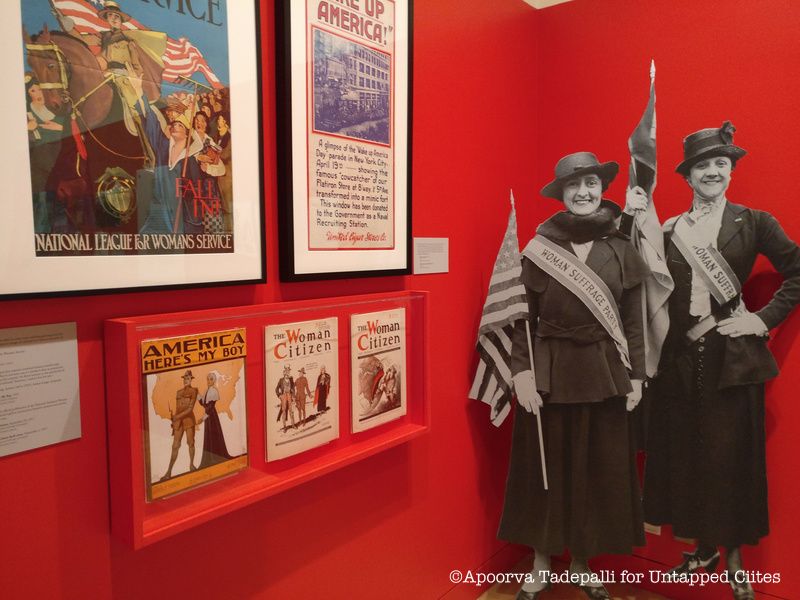
That women won the right to vote one hundred years ago is not a relevant fact simply for the suffragette movement at the time, or for women’s liberation half a century later, or for the feminism of the twenty first century. This is the most basic idea of the New York Historical Society’s exhibition, Hotbed, and its accompanying documentary We Rise.
Suffrage, like feminism more broadly, was not just about feminism. It was a vital part of a much larger set of tumultuous changes taking place as the century took off. New York was swelling with the enormous influx of immigrants; industry and infrastructure were growing at a rapid pace; entertainment, nightlife, and moving pictures were booming, becoming a part of middle class sensibility for the first time. All of these factors soon became hugely intertwined with suffrage: it is in this context that the new, powerful voices of the women’s movement took grasp.
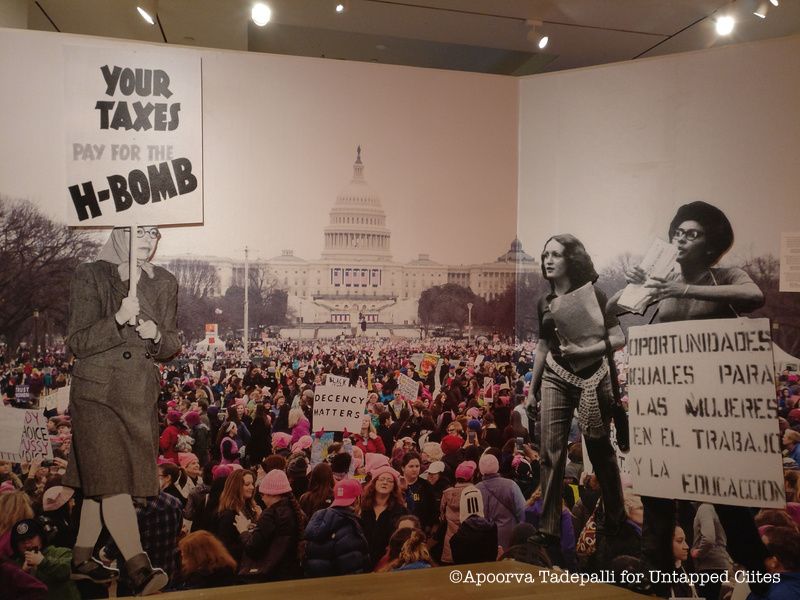
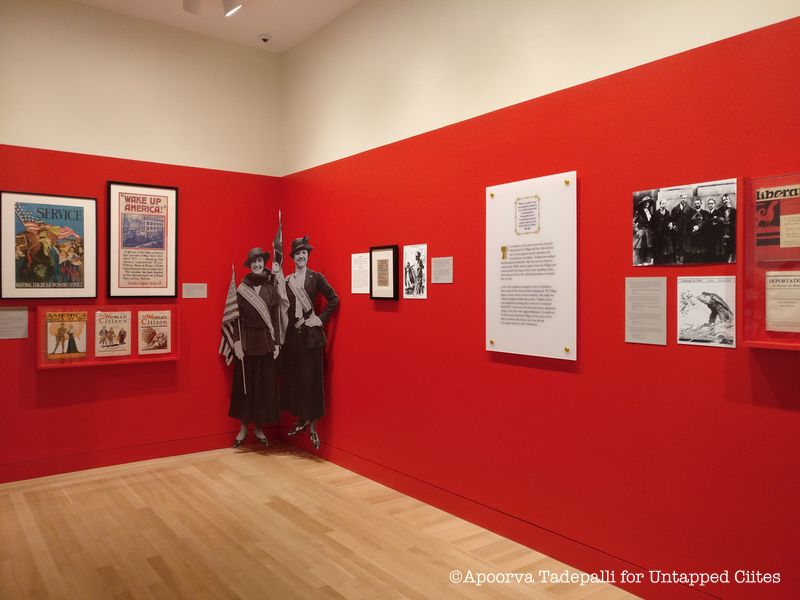
We Rise, a short documentary by Donna Lawrence Productions, narrated by Meryl Streep and with music by Alicia Keys, briefly profiles some of the important women of the suffrage movement—Clara Lemlich, who organized fierce protests for labor reform following the Triangle Shirtwaist Factory fire; Addie Hunton, who organized the National Association for Colored Women and advocated against the terrible conditions of black soldiers stationed during World War I; Lillian Wald, nurse and founder of the Henry Street Settlement. The suffrage movement defined an era of immense change in the country, and the right to vote was only one such change.
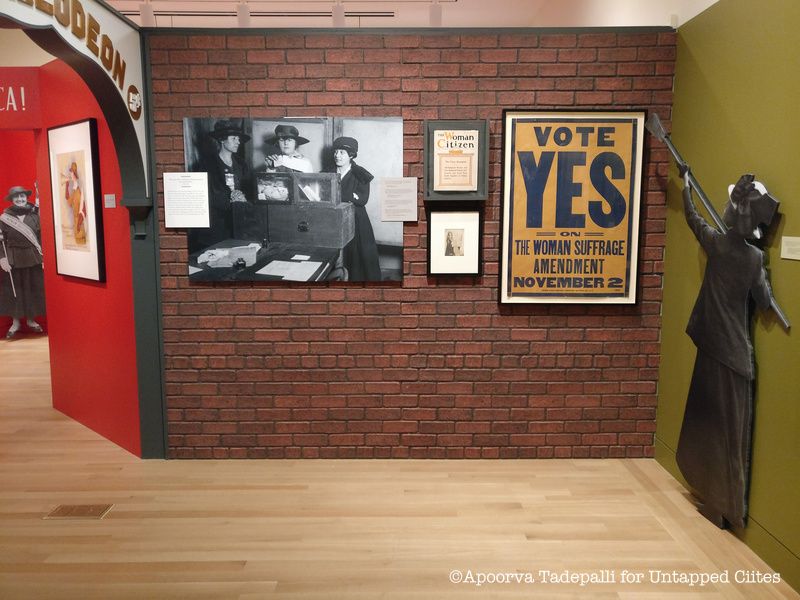
Hotbed places feminism in the broader context of activism that New York City saw at the beginning of the twentieth century. The exhibition devotes a section to the fierce activism in the “hotbed” of Greenwich Village, where many radical artists lived and worked, fighting for justice and women’s rights far outside of the right to vote. Designed like a Greenwich Village café, the section displays a map of all the significant politically active institutions in the Village, and a masthead of the socialist magazine The Masses.
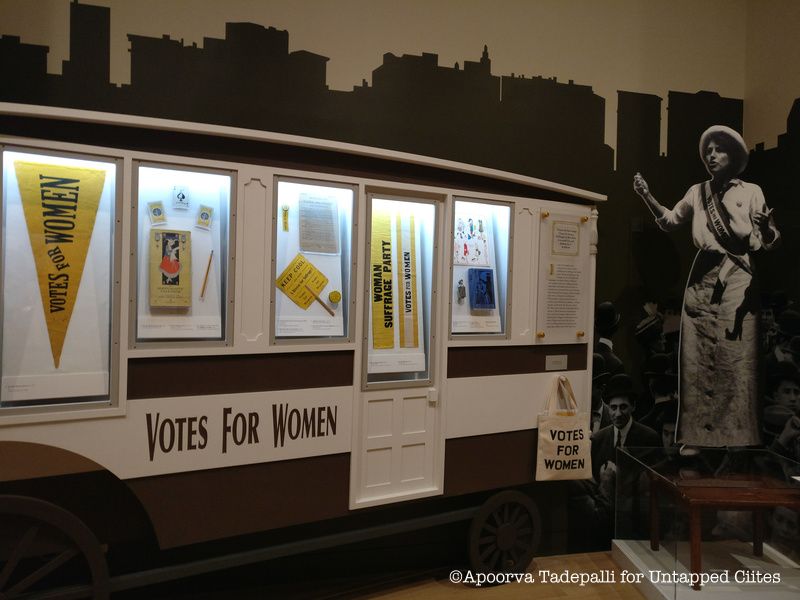
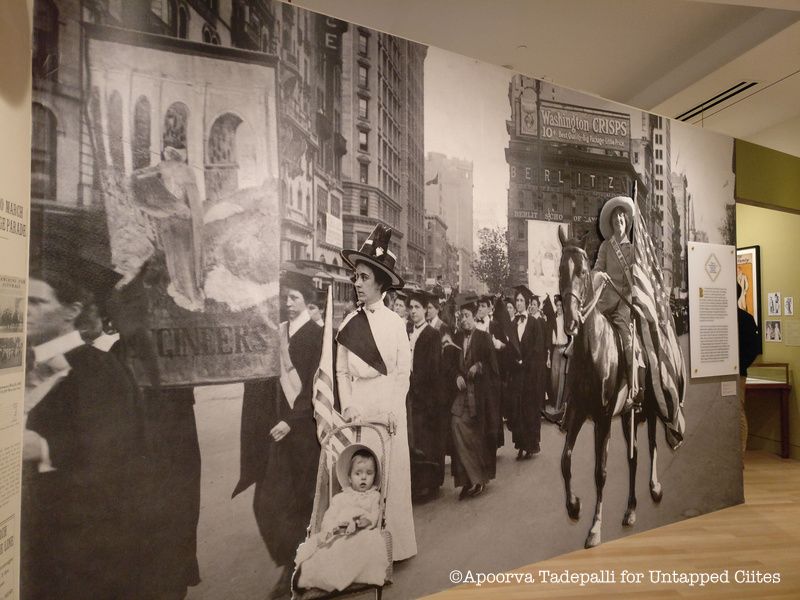
As it twists into various other sections, the exhibition also shows how the media was used effectively for activism, as well as how a demand for racial justice and labor reform were an integral part of suffrage. Debates about birth control or the corset broadened out to become larger, more urgent and progressive conversations about free speech, “family limitations”, or the constraints of the modesty expected of women. A release from this modesty brought many middle class women to the streets to march in an unprecedented way; the New York Times wrote that many women “had never taken part in anything of the kind before, and were resolute, but a good deal scared.”
Throughout the exhibit, posters and photographs taken by Jessie Tarbox Beals, the first American female photojournalist, show women of all backgrounds — from black professionals to Italian factory workers to Chinese students — crowding the streets in the hundreds. In the corner of the Village café, a typical bohemian blouse and skirt stand languidly, quietly and firmly rejecting the country’s suffocating constraints of public decency.
Hotbed is now on view from November 3, 2017 – March 25, 2018 in the Joyce B. Cowin Women’s History Gallery at the New York Historical Society (170 Central Park West).
Next, read Museum of the City of New York Celebrates A Century of Women in Politics in NYC & Beyond.
Subscribe to our newsletter